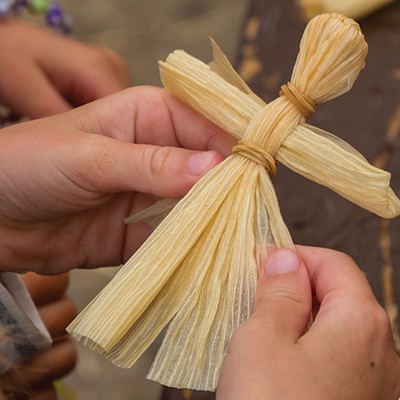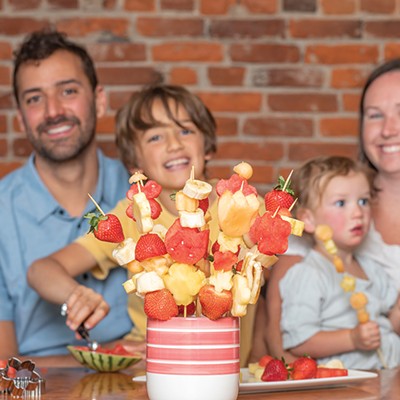As spring blooms around us, we're called to move outdoors and smell the flowers - literally! Whether collecting beautiful plants on a nature walk or preparing for an egg collecting adventure on Easter, you can bring the season to life with this sweet DIY basket-making craft for kids. In addition to being useful for carrying things, baskets make great centerpieces at the family holiday table.
Basket weaving is one of the oldest forms of art in human history. Before pottery was invented, Neolithic hunters and gatherers were crafting simple baskets. Archeological evidence dating back 27,000 years shows clay imprints of woven material used during the Stone Age.
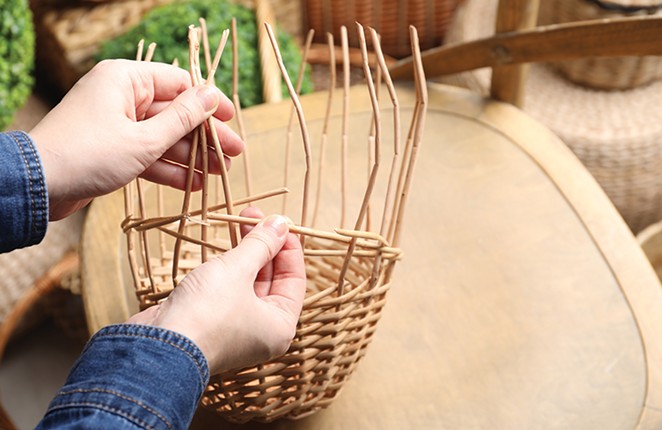
Today, basket artists from around the world continue this long-standing tradition. There are countless potential materials from which to weave a basket, from natural jute, willow or pine needles to construction paper or recycled plastic bags, but one of the easiest and most natural materials to work with is pre-cut round reed. Reed is versatile, abundant and sustainable and makes a great choice for the beginning basket weaver.
If your child is new to basket weaving, the best place to start is to purchase an all-in-one kit that comes with everything you need to complete one basket. Such kits are available from retailers like Amazon, Etsy or, basketweaving.com (they include all the teaching and preparation tips needed in clear and detailed illustrated instructions).
The introductory kids kit is designed for children ages nine and up to make a basket approximately 4" wide and 6" tall. The included circular wooden base makes it very easy for children to learn weaving, without having to weave a base first, which can be quite challenging.
The simplest baskets consist of three parts: the base, the spokes (vertical pieces) and the weavers (horizontal pieces). After your kit arrives, prepare all your reed ahead of time by cutting the spokes into 12" pieces and wrapping the long weaver pieces into individual coils. Next, soak the reed in a big bucket or tray of water so it's soft and pliable. (Most natural materials are woven when fresh or wet).
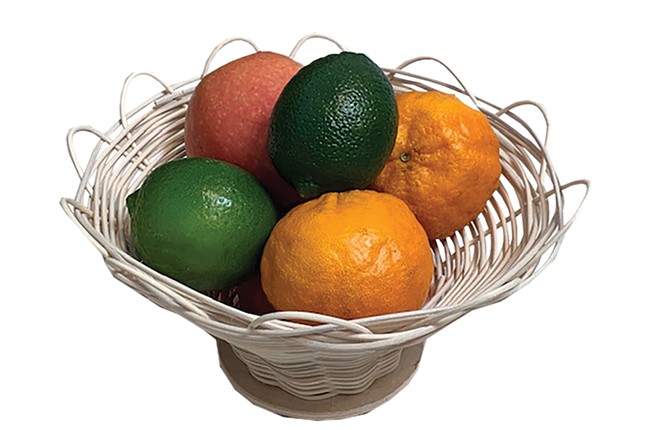
To get started, place the spokes into the pre-drilled holes in the base so there is about an inch hanging down. Bend the bottom of the first spoke end down in front of the next spoke and behind the second spoke. Continue bending each spoke until they all overlap and hold each other in place at the bottom of the base.
With the hardest part out of the way, the rest is easy. Simply grab a weaver reed from your water bucket and begin weaving it over and under each spoke. When you come back to where you started, the reed will naturally move upwards to create the next layer, as you continue to weave in and out of the center of the basket. As you weave, you can choose to add decorative plastic beads or a colorful ribbon, if you wish.
When you reach the end of a weaver, simply tuck it into itself inside the basket and get a new piece to add on until you reach the desired height of the basket. Then, carefully tuck your spokes over and down to create a clean edge. Viola!
Have fun experimenting with the size and shape of the basket. Do you like a looser weave with obvious air gaps or a tighter weave with little space in between? Do you want to pull your reed so tightly that it narrows at the top like a vase, or keep it open and wide? You decide!
To make this project really pop just in time for Easter, May Day, Mother's Day or any other special seasonal event, grow your own grass directly into your basket by adding potting soil, water and quick-growing grass seed, such as rye or wheat berry.
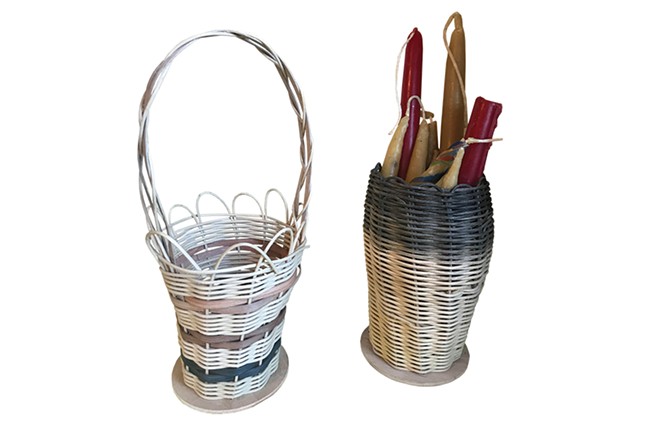
After evenly sprinkling the seeds on the soil, mist with a spray bottle to avoid oversoaking or disturbing the seeds. Next, loosely cover the basket in plastic wrap and place it in a warm sunny place like a kitchen windowsill to create a greenhouse effect. Be sure to remove the plastic and continue lightly watering after the seeds start to germinate within a couple days. Your child can even give their basket a "haircut" and trim the grass with scissors once it's about 2-3" tall.
Reed basket weaving is a great way to introduce a natural, traditional craft to kids and get them excited for the spring season, while grass growing introduces basic gardening skills, as well. So, this year, why not try your hand at both and make your very own sweet basket!






